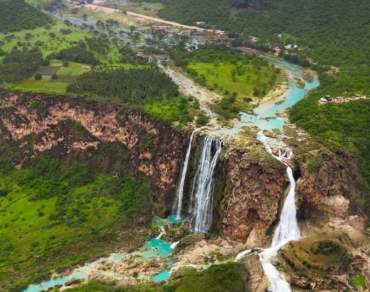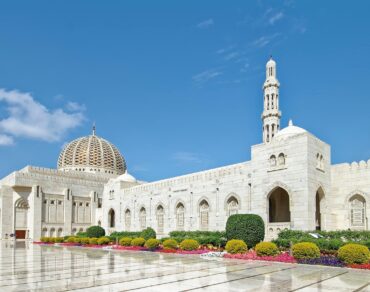
-
Oman Tour Packages > Blog > The Truth About Fishing in Salalah: Best Seasons and Spots Revealed
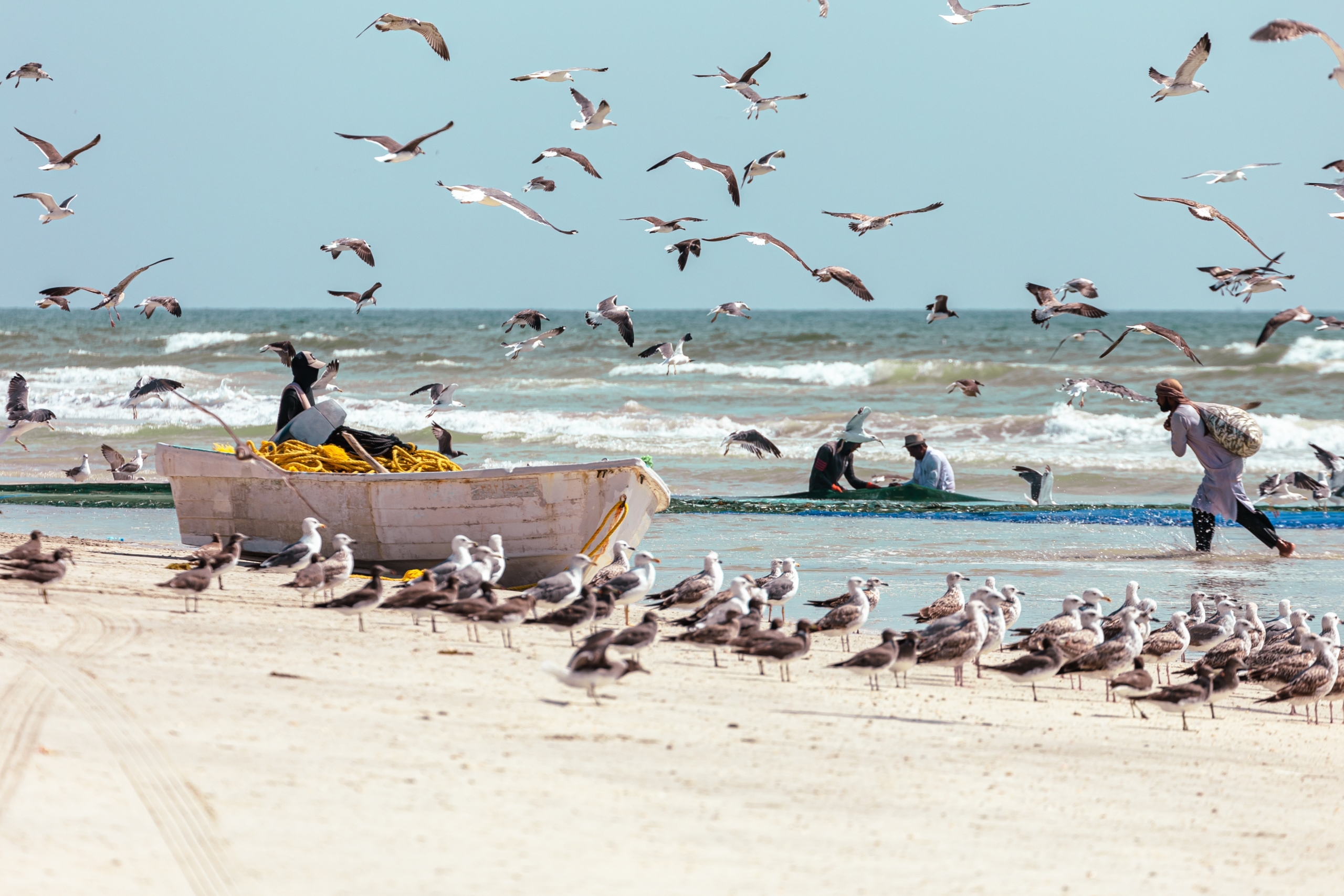
The Truth About Fishing in Salalah: Best Seasons and Spots Revealed
Salalah is a chance to experience fishing where three major water bodies join – the Persian Gulf, Arabian Gulf, and Indian Ocean. This Omani paradise has become one of the most untouched fishing grounds in the region. Monster Giant Trevally weighing up to 60 kg swim alongside diverse species like Yellowfin Tuna, Marlin, and Sailfish.
The waters around Al Mughsail Beach, Al Baleed Beach, and the Hallaniyat Islands are rich with various species. Dorado and Kingfish can be caught year-round, while Giant Trevally are most abundant between October and May. The prime fishing season starts from mid-October and extends through May, with each period bringing different catches. The best fishing opportunities emerge right after the monsoon season, but fishermen should avoid the foggy, rough seas during July and August.
Understanding Salalah’s Fishing Calendar
The fishing in Salalah calendar changes with the seasons and sea conditions. The best time to fish is from late September to early May. Each month brings chances to catch different types of fish.

Peak seasons for different fish species
Salalah’s waters are rich with marine life year-round. You can catch Dorado and Kingfish in any season. Giant Trevally fishing is most successful between October and April. March and April tend to yield impressive catches.
Here’s when specific species reach their peak:
- February to April: The action heats up for Sailfish
- September to March: Yellowfin Tuna are most active, especially near floating objects
- March: Your best shot at landing big Tuna
- October and March: These months offer monster Giant Trevally weighing 50-60 kilos
Impact of monsoon on fishing conditions
The monsoon season, known locally as “Al-Khareef,” completely changes Salalah’s fishing scene from late June to mid-September. This natural event sets off a chain of changes that benefit the marine ecosystem.
Southwest winds blow at 20-30 knots along the coast. These winds trigger upwelling, which pushes cold, nutrient-rich water from deep trenches to the surface. As a result, the micro-plankton explodes in numbers, which jumpstarts the entire food chain.
The monsoon does more than just make fishing challenging. Water temperature drops by a lot – studies show a decrease of 11.9°C after the monsoon. The cooler water and extra nutrients end up boosting marine productivity.
Right after the monsoon, fishing opportunities are at their best. The sea teems with life, and fishing activity picks up speed. This abundance explains why some species, including local whales, stay in these waters all year instead of moving to cooler areas.
Top Fishing Locations in Salalah
Salalah’s waters are home to some of the Middle East’s best fishing spots. The area stretches from coastal hideaways to deep-sea hotspots, and each spot gives anglers something unique to experience.
Coastal fishing spots
Al Mughsail Beach is a top coastal spot that’s known for its rich marine life and great shore fishing. Al Baleed Beach pulls in anglers with its crystal-clear waters, and Al Hafah Beach is perfect for bottom fishing techniques.
Taqa Beach and Marbat Beach round out the coastal options. Marbat’s rocky terrain makes it ideal for different types of fishing. These spots are a great way to get chances to catch Spangled Emperor and Barracuda.
Deep-sea fishing areas
The waters by Salalah Port are amazing for deep-sea fishing. Large floating tankers and ships attract bait fish naturally, which brings in the prized game fish. You’ll find plenty of fish in these deep waters:
- Yellowfin Tuna (peak season: September-March)
- Marlin and Sailfish
- Giant Trevally
- Amberjack and King Mackerel
The Hallaniyat Islands sit 45 minutes from shore and rise from depths of over 2,000 meters. Strong currents around these islands create perfect hunting grounds for huge Giant Trevally. These monsters often weigh between 50-60 kilos.
Hidden local gems
Shuwaymiyah, 300 kilometers north of Salalah, is one of the region’s best-kept secrets. Hasik Village has untouched fishing grounds just 30 minutes by boat from some of the area’s richest spots.
The area near Bajat Al Arab has become one of the region’s top fishing spots. These quieter locations often give you the most authentic fishing experience, away from busy areas.
Light tackle fishing works great in the inshore waters. These spots have caught the attention of anglers who like to mix up their style between inshore spots and offshore adventures.
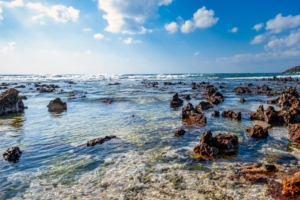
Essential Fishing Techniques
Becoming skilled at fishing in Salalah means understanding both time-honored traditions and modern methods. We practiced handline fishing, a technique that skilled Omani fishers respect the most in these waters.
Traditional Omani methods
Handline fishing showcases Salalah’s fishing heritage, where crews often come from close-knit families. This method uses a single fishing line with a baited hook. Fishers need exceptional skill to manually control and cast the line. Fishers operated from 28-foot skiffs with single outboard motors until recently.
Net-making stands as another vital traditional skill in Salalah’s coastal areas. Local artisans create nets of all types, each with its purpose:
- Al Maghdafa: A small, round net to catch fish from shore or a boat
- Al Jarif: Spans 35-40 meters in length and 10-15 meters in width, designed for sardine fishing
- Al Mughawir: Medium-sized nets known for durability
Traditional methods show remarkable sustainability, with 85% higher biodiversity compared to modern approaches. These ancestral techniques score 90% in selectivity, which ensures targeted catches while protecting marine ecosystems.
Modern fishing approaches
Salalah’s fishing scene has evolved with technology. Many traditional vessels have been upgraded to 33-foot fiberglass boats that have insulated storage and dual outboard motors.
Each fish species needs specific modern techniques:
- Giant Trevally: Caught through jigging and surface popping
- Tuna: Best targeted using live bait methods
- Sailfish: We caught these mostly by trolling
- King Mackerel: Responds well to various trolling techniques
Serious anglers who target monster GTs weighing 50-60 kilos need heavy popping equipment. This setup needs rods rated for PE10 or PE12, paired with high-capacity reels like Shimano Stella 18000, spoiled with 100-130 lbs of braid.
Traditional and modern approaches work hand in hand. Local fishers blend ancestral knowledge with modern gear, creating a hybrid approach that maximizes catch potential while protecting marine resources. This balance makes the region a prominent fishing destination.
Choosing the Right Equipment
Picking the right fishing equipment is a vital factor to succeed in Salalah’s variety of waters. Each piece of gear, from simple essentials to specialized equipment, has its specific role in your fishing arsenal.
Simple gear requirements
You just need some fundamental equipment to start fishing in Salalah’s waters, which will give a solid foundation. A medium to medium-heavy spinning rod with a corrosion-resistant reel is the foundation of simple gear. You’ll just need:
- A fishing rod and reel combination
- Fishing line (20-30 lb for standard fishing)
- Hooks, sinkers, and bait
- A tackle box for organization
- Polarized sunglasses and a fishing hat
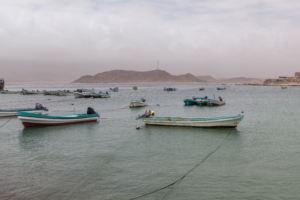
Advanced equipment options
Serious anglers who target specific species just need specialized gear. Heavy popping and GT fishing require rods rated for PE10 or PE12, paired with high-capacity reels like Shimano Stella 18000 loaded with 100-130 lbs of braid.
Medium popping setups work best with semi-stiff rods rated PE5 to PE6, paired with 8000 to 14000 size reels. Jigging enthusiasts find short, specialized rods rated for PE6 perform best with Shimano Stella 8000PG reels.
Light tackle fishing creates exciting possibilities with PE2-3 (20-30 lb) casting gear. This lighter setup handles most inshore species well when paired with stickbaits and poppers in the 10-14 cm range.
Local rental services
The Fishing Salalah provides all the gear you’ll need before you spend money on expensive equipment. These services give you detailed packages with rods, reels, and bait, so you can focus on fishing rather than equipment logistics.
Online booking platforms have simplified local rental options, making it easy to secure equipment and boats. These services include:
- Soft drinks and water
- Coolers for catch storage
- Simple fishing accessories
Rental services keep their equipment in good condition to ensure reliability during your fishing adventure. Of course, buying personal gear might save you money if you plan extended stays or frequent trips.
Local Fishing Rules and Permits
Understanding Oman’s fishing rules helps protect marine resources and keeps you on the right side of the law. The Ministry of Agriculture, Fisheries and Water Resources watches these activities through complete monitoring systems.
License requirements
You don’t need a permit to fish from Salalah’s shore, which makes it easy for casual anglers. However, boat fishing needs a proper license. Charter operators usually cover their passengers under their boat permits.
Professional fishing licenses have specific requirements:
- Omani citizenship
- Age between 21-60 years
- Valid fishing practice license
- Registration in the Manpower Record
- Completion of a specialist course at the Fisheries Training Institute
The process takes about three months, and licenses last three years. Boat owners must also get separate vessel licenses that meet maritime safety standards.
Conservation guidelines
The Ministry protects Salalah’s marine resources through several conservation measures:
Seasonal Restrictions:
- No shark fishing from December 1 to September 30
- Lobster catches follow strict seasonal rules
- Abalone fishing runs only for two months (October-November)
Protected Areas and Methods:
- Some regions are marine sanctuaries
- Destructive fishing practices face strict bans
- Undersized catches and egg-bearing females must be released immediately
Recent statistics show strict enforcement. January 2022 saw 371 violations:
- 269 fishing license violations
- 50 cases of prohibited fishing methods
- 8 instances of fishing in restricted areas
- 19 cases of unlicensed worker employment
The ministry’s Fisheries Control Operations Room uses modern technology and remote sensing systems to track vessels. Violators lose their equipment and face legal action. Recent seizures included:
- 45 boats
- 66 engines
- 2,345 fishing nets
- 245 trapping cages
These rules support Oman’s fisheries sector, which provides jobs to about 30,000 traditional fishermen and 150,000 people in related industries. The regulations balance economic benefits with environmental protection to keep fishing eco-friendly for future generations.
The ministry works closely with:
- Coast Guard of the Royal Oman Police
- Royal Navy of Oman
- Maritime Security Center
- Ministry of Labor
This teamwork helps protect Salalah’s fishing grounds while supporting the sector’s expected growth from 1% to 2% of GDP over the next 15 years.
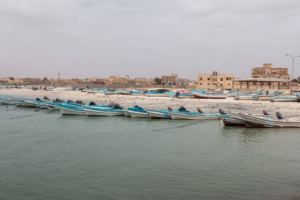
Conclusion
Salalah ranks among the most rewarding fishing spots we’ve discovered. This destination welcomes both beginners and seasoned anglers throughout the year. The best fishing happens from October to May, though each season brings unique catches and challenges. Traditional Omani fishing methods blend with modern techniques to create an enriched experience.
Strict conservation measures and smart regulations help Salalah’s waters flourish. The permit and license requirements might look daunting at first, but they safeguard the area’s rich marine ecosystem. Local charter services make everything simple by providing equipment and knowledge for unforgettable fishing trips.
Your success in Salalah’s waters depends on picking the right season, spot, and gear for your target fish. The waters amaze us with their abundance and diversity, from the peaceful shores of Al Mughsail Beach to the challenging spots near the Hallaniyat Islands where monster GTs roam. Cast your line into the crystal-clear waters of Salalah, where every catch is an adventure and every moment is a memory waiting to happen, so book your Fishing in Salalah now.
Related Tours
Related Tours
Test2
© 2025 Oman Tour Packages. All rights reserved.
